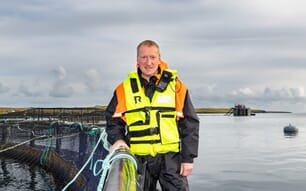Even more troubling is that IUU fishing worldwide appears to be on the increase, as IUU fishers try to avoid stricter fishing rules that are being created to deal with downturns (that is, declining catches) in a growing number of fish stocks.
An estimated 20 per cent of all fish hauled in around the globe are caught illegally through a combination of fishing in restricted areas, subverting quotas and seasonal limits, and using banned gear. These fish are shipped around the world and sold to existing markets, where most buyers have no idea that the food they are purchasing is in fact stolen goods.
This week Google has joined the fight to stop illegal fishing by launching a dedicated free tool that helps to track down illegal fishing boats and such activities. Global Fishing Watch resembles Google Earth but only that this time it used at sea.
The technology collects data from AIS (Automatic Identification System) which collects GPS broadcasts of locations of numerous ships.
The software then distinguishes cargo and non-fishing vessels from fishing vessels by analysing elements such as direction and speed and then maps activities around the world, noting the time each vessel spends fishing.
Drones are now being been used as surveillance tools to monitor and control illegal fishing by a number of countries including Belize, Palau, USA and Australia.
Despite this, it still remains unknown if the use of drones alone will be able to prove in criminal proceedings of illegal fishing.
Whilst the technology behind drones has increased the pixels and resolution, the ability to actually determine what is occurring onboard a vessel such as fishing still remains difficult and in most courts circumstantial evidence does not suffice as evidence of a crime without corroboration.
For example: In October 2012, a report by the FWC Division of Law Enforcement stated that the vessel Peter Gladding and crew along with NOAA officials spent six days in the Dry Tortugas testing an unmanned, remote-controlled drone called the Puma AE.
The Puma AE captures images, video, and has infrared capabilities. The operation concluded with issuing two federal citations. The first citation was issued onboard a diving vessel operation that illegally entered, moored, and conducted diving activity within the Tortugas North Ecological Reserve without an access permit.
The second citation was issued on a sailing vessel actively fishing illegally within the Tortugas South Ecological Reserve.
However, none of these offences relate to “illegal fishing”.
Drone surveillance can also assist as a prosecution tool as it may provide reasonable information for a fishery officer to believe that an illegal act has taken place.
In many countries it is a requirement for fishery control officers to establish ‘probable cause’ prior to conducting certain searches, seizures and arrests. This means that they must have reasonable belief in certain alleged facts and should be more than just suspicious.
To establish probable cause it is not necessary that a fishery control officer possess knowledge of facts sufficient to establish guilt but more than suspicion is required. In spite of its accuracy a vessel position even though it may indicate a clear violation of the limits of a fishing prohibited area it does not provide adequate information to determine the nature of the suspicious activity.
The value of drone surveillance as a prosecution tool is not as absolute evidence of illegal fishing but firstly as a tool to direct limited resources to search and inspect vessel behaving in a pattern that would indicate fishing and secondly as corroborating evidence.
While drone data alone is not evidence to warrant a conviction, it may be of assistance in establishing a preponderance of evidence in combination with other first-hand information.



